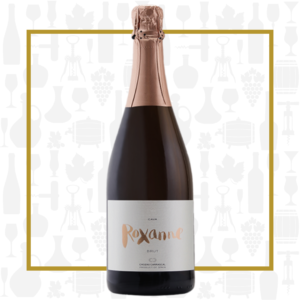Cellar Profile
In 1990, husband and wife team Julin López and María José Peidro purchased an established vineyard in the Requena-Utiel region of Valencia in southeastern Spain. Shortly thereafter, when their extensive studies identified that their terroir was similar to that of many of the French vineyards they frequently visited as a family, they planted several international grape varieties. Today, the Chozas Carrascal vineyard is comprised of 14 plots sitting at 750-840 metres above sea-level on a thick slab of limestone-based subsoil, distinctive within the region. Their climate is significantly more continental than the rest of the D.O.P., with hot, dry summer days and cool, fresh nights. The winery’s uniqueness was recognized in 2012 when it was awarded ‘Vino de Pago’ status, meaning the winery is its own D.O., separate, distinct and at the top of the Spanish wine hierarchy. To date, there are 21 Vino de Pago properties in the country, each one representing a singular identity that combines the best of tradition and modernity. The 30-hectare vineyard at Chozas Carrascal is planted with 12 grape varieties split between local, indigenous grapes—Bobal, Monastery, Garnacha, Tempranillo and Macabeo—and widely-recognized French examples: Cabernet Sauvignon, Cabernet Franc, Merlot, Syrah, Chardonnay, Viognier and Sauvignon Blanc. These vineyards are farmed and certified organic and the wines exhibit elegant structure, intense, complex character and, most importantly, delicious drinkability.
Region
Utiel-Requena is a Spanish Denominación de Origen Protegida for wines located in the province of Valencia. It takes its name from the two neighbouring towns of Utiel and Requena and is renowned for the predominant use of the Bobal grape variety. Although these wines are moderately contemporary, the region is anything but. Traces of Phoenician amphorae suggest viticulture and wine production here date at least as far back as the 7th century BC.
Vineyard
Chozas Carrascal has been daring in its viticulture approach, planting its vines at a density of 1,335/acre (3,300/ha), far denser than any vineyards nearby. This forces plants to compete for water and nutrients, driving down yields. The La Real plot has a slight slope and an east-west exposure. Sunlight, cool coastal breezes and loamy, chalky soil all contribute to the quality of the wines produced.
Varieties
Macabeo is found mainly in the Central Penedès. It is particularly well-suited to sparkling wine production, adding fruity aromas and lively acidity to these blends. Chardonnay is the world’s most famous white wine grape and also one of the most widely-planted. The most highly-regarded expressions of this variety in sparkling wines come from the Champagne region of France.
Winemaking
Both varieties are hand-harvested, fermented and macerated separately (after a touch of skin contact) and aged for 6 months before blending. Secondary fermentation is induced in bottle, in the Traditional Method. The wine spends one year in bottle, on its lees, to allow autolysis while retaining primary fruit characteristics. It is then disgorged and sealed after a small dosage.
Tasting Notes
More fruit-driven than many Cavas, but with a good amount of yeasty, biscuit notes mingling with the citrus, apple and white flowers. The sea foam mousse is creamy and spritzy, adding complexity to the tangy citrus flavours and stony minerality. Crisp and refreshing with a long, complex finish. Chill and sip as an aperitif, or serve with freshly shucked oysters or truffle popcorn.

 info@buyersandcellars.ca
www.buyersandcellars.ca
info@buyersandcellars.ca
www.buyersandcellars.ca